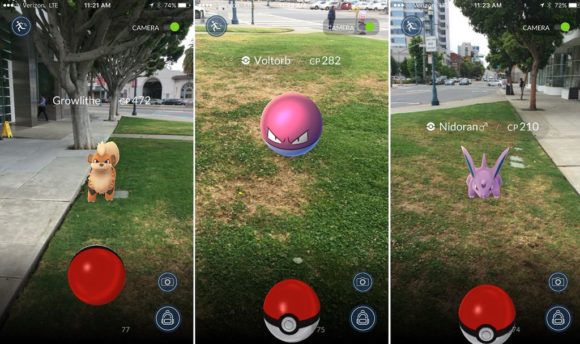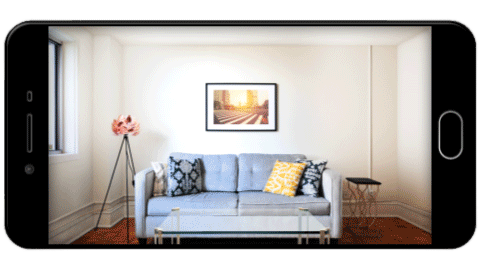This article is part of a sponsored series brought to you by CoreLogic | Symbility. View Series
This post is part of series sponsored by CoreLogic | Symbility.
As technology advances and becomes more available to a wider audience, we tend to analyze how that tech advancement can benefit us, our clients, and our client’s clients. Computers were once giant machines that took up entire rooms. Today, one smartphone holds more computing power than all the computers used during the first moon landing combined. And it fits in your pocket. Naturally, as smartphones became more ubiquitous we, as an industry, looked for new ways to innovate that could better serve those that needed technology that was more mobile and able to be where they needed it the most. For us at CoreLogic | Symbility™, those innovations took the shape of our mobile apps like LINK™ and Video Connect™, and we continue to explore new technologies that can help you find better ways to serve your customers.
One technology that we have a close eye on at the moment is Augmented Reality. It’s becoming more accessible and we think it offers great possibilities for the future of property insurance. Below, we define what augmented reality is and lay out some of the benefits it can bring that we are already thinking about.
What Is Augmented Reality (AR)?
Before we dive into the possibilities of AR, it’s probably best to explain what it is in the first place. Augmented reality, also known as “mixed reality,” is a way of combining the real world in front of us with virtual objects and information. It is usually seen through a screen or some kind of lens, which makes it appear as if the virtual object is in the real world. An example that many people may be familiar with is Pokemon Go, the mobile game phenomenon that took the world by storm in 2016. This game used AR to allow players to capture Pokemon monsters in the real world that were only visible through their mobile device screens.

Some people may confuse this technology with Virtual Reality (VR), but VR creates a completely simulated environment, while AR only augments parts of the real world in front of us. This can be useful in many cases as it can overlay information and other useful and fun things with the real world in front of us. Here’s a video example of what AR may look like one day to give you a better idea of what we’re talking about:
How Can Augmented Reality Be Used In Property Insurance?
As of right now, the technology isn’t quite at the level shown in the video above. However, that doesn’t mean that we can’t start using this technology to do some fairly impressive things already.
For example, Symbility Video Connect is our live collaboration tool that allows policyholders to interact with adjusters by using their smartphone or tablet camera to show damages and start documenting right at the first notice of loss stage of a claim. This has been a very popular technology to help carriers with their push into virtual adjusting, but it doesn’t just do pictures and video anymore. Using AR, the adjuster on the phone is able to start taking exact measurements of damaged areas right through the policyholder’s phone. This allows them to gain faster and more accurate details for the claim, which can drastically help to speed up the resolution time. Take a look at just how easy it is to get an accurate measurement without even entering the house:

Another way AR could be used through the claims lifecycle might be to explore different options for fixing damages. Imagine if policyholders could explore options in real-time with their contractors when picking materials to rebuild sections of their homes. By using AR, contractors could cycle through different materials, colors, designs, and more right there in the damaged home and the homeowner would get to see what each option might look like while the technology also creates cost estimates based on what materials and how much are being used in real-time.
These are just a couple of the ideas we’re started to think about and try out, but the possibilities are endless. Who knows what more advanced technology may allow us to do in the near future?
What does the future hold for Augmented Reality in claims?
Right now, the technology is still in its infancy and can be quite expensive to build and deploy.
Thankfully, technology moves forward at a rapid pace and companies are working on making augmented reality more accessible to large organizations and consumers. A few years ago, Apple released ARkit, a framework to help iOS developers easily work to create AR experiences. Google is working on ARcore, its own 3D mapping and AR framework for developers. As these technologies and our mobile devices advance, we will see faster processing, clearer images and videos, and more accurate measuring and rendering.
All of that means being able to do more with AR to make the claims process easier and more efficient.
With more and more carriers looking into ways they can tap into virtual adjusting to help their policyholders process claims faster, augmented reality will help them live up to that promise. At the same time, for claims where adjusters will still be needed in the field, AR can be used to help them capture important measurements and other data quickly and accurately and then share it with everyone else working on that claim, all on a single mobile device with just a few touches of the screen.
AR holds exciting possibilities for the future of claims. It’s time to embrace the future.
Image credits:
Pokemon Go image: https://www.flickr.com/photos/dcmot/28063044940
© 2019 CoreLogic, Inc. All rights reserved.
CoreLogic, the CoreLogic logo and CoreLogic | Symbility, LINK, and Video Connect are trademarks of CoreLogic, Inc. and/or its subsidiaries. All other trademarks are properties of their respective holders.
Was this article valuable?
Here are more articles you may enjoy.


 ‘Super Roofs’ Are Rewarding Insurers, Cat Bond Investors and Homeowners
‘Super Roofs’ Are Rewarding Insurers, Cat Bond Investors and Homeowners  Toyota Unveils Concept LFA Supercar, and It’s Fully Electric
Toyota Unveils Concept LFA Supercar, and It’s Fully Electric  Hermès Heir Sues Arnault and LVMH in $16 Billion Suit Over Lost Shares
Hermès Heir Sues Arnault and LVMH in $16 Billion Suit Over Lost Shares  Losses Top $20 Billion in Asia Floods as Climate Risks Grow
Losses Top $20 Billion in Asia Floods as Climate Risks Grow 